January brings some of the best fiestas of the year in the Philippines and if you’re touring the country then, you don’t want to miss any of them! The best and brightest on offer are the Ati-atihan Festival and the Feast of the Black Nazarene. Read below to find out more about these famous festivals.
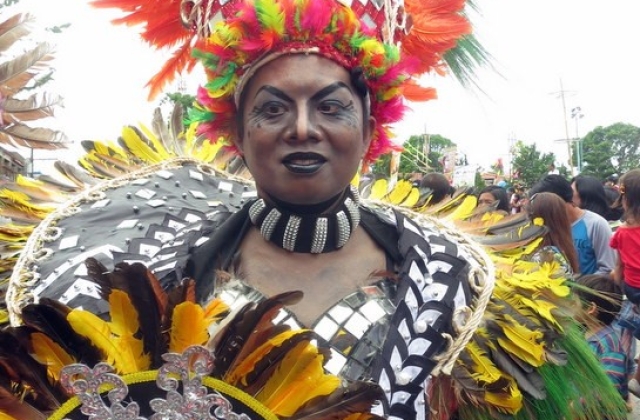 photo by Lea_r (via Flickr)
photo by Lea_r (via Flickr)
The Ati-atihan Festival
Dubbed as the Filipino Mardis Gras, this exciting festival that occurs around the third week of January in Kalibo, Aklan has an equally exciting history. Back in 1212 AD, Malay travelers from Borneo landed on Panay Island and were greeted by the Ati indigenous people. And once they arrived, they worked out a purchase deal with the local chief named Marikudo so that they could settle on the island. Marikudo granted their wish and the Malay offered the chieftain’s wife a very long necklace in addition to paying for the land with a golden salakot [explain what this is], brass basins and cloth. After the exchange, the parties celebrated. They enjoyed a large feast, dance and brotherhood marking the first Ati-atihan Festival.
Years later, after the exchange, the brotherhood continued as the Ati people were being starved out of their region due to a bad harvest. So they had to travel down to the Malay settlers and ask for help which was offered happily. In exchange, the Ati people sang songs for them and gave gifts in thanks. Although the Ati tribe were pagans, over the years, it was the Spanish missionaries that added the Christian meaning to the festival hence the added parade of baby Jesus paintings and ornaments.
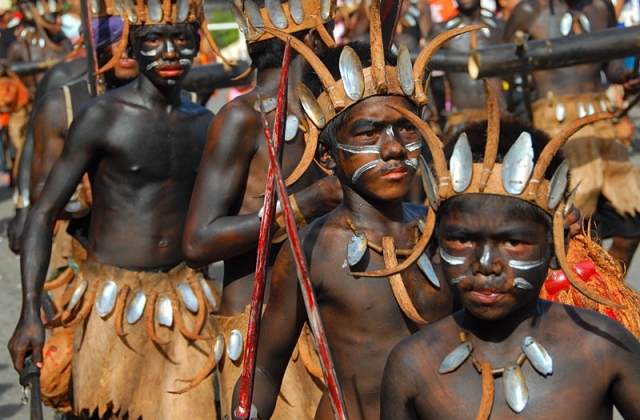 photo by Ken llio (via Flickr)
photo by Ken llio (via Flickr)
Ati-atihan’s Festival Promises Seven Days of Festivities with 10 Days of Prayer
The official schedule hasn’t been released yet for 2018’s festival but traditionally, the first day of prayer will begin the second Saturday of January and many locals will attend a mass for Santo Niño, the boy Jesus. After the mass, the government puts on dances in the streets and festivities for when the church-goers exit.
The next day usually begins at dawn after a rosary procession to honor battle history. After the group mass, locals will shout Hala Bira! The history of this call originated from the 17th century when the Moro raiders were attacking Panay island. When they were defending their land, artillery men would yell Hala Bira! or “Hit them!” Throughout the battle, they became blackened by gunpowder and looked like the indigenous Ati. This is why locals cover themselves in black powder during the Ati-atihan festival. The Santo Niño is credited as the savior in protecting the locals from the Moros.
The next few days are followed by more praying with smaller parades and events sprinkled throughout until the main events on Saturday and Sunday. Past favorite events include the Higante Contest which is a giant float competition, an Aklan Product Showcase, Car Show and Motorcycle Rally. Not to mention the Hala Bira Ati-atihan Nights, Aklan Visual Arts exhibit, the bazaar and the Sadsad Ati-atihan Contest. But extra special treats happening in 2018 are the Mr. Ati-atihan Festival King competition, the Tamboe Salvo Contest and the Kalibo Music Outdoor party.
However, if you only have one day to visit, make sure it’s the last day on Sunday as this is the festival’s highlight. Why? Because this is the day with the final and biggest parade, float competition and baby Jesus parade. Still not enough? There’s an official masquerade ball that marks the end of the festival as well.
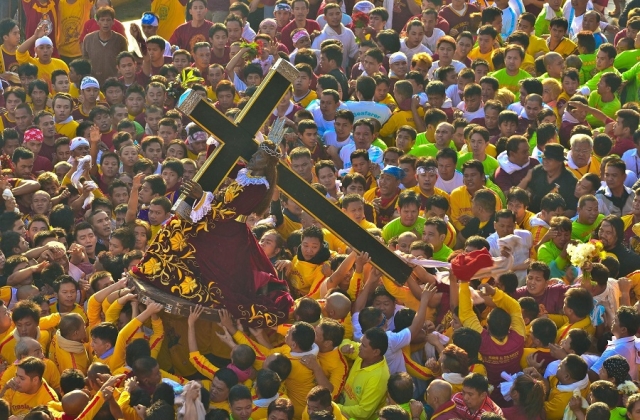 photo by Jsinglador (via Creative Commons)
photo by Jsinglador (via Creative Commons)
The Feast of the Black Nazarene
The Feast of the Black Nazarene is one event that is truly Filipino. A cultural phenomenon that garners news attention year after year shows no sign of losing popularity. The Black Nazarene or Black Jesus is a wooden carving of Jesus that is made of wood draped with a maroon and gold cloak that is transported to the Quiapo Church in Manila twice a year.
The most popular day, and The Feast of the Black Nazarene event is held on January 9. The other time the statue is transported is during Good Friday. The event is so significant because it is believed that if a person touches the statue, he or she would be cured of illness or disease as well as garner good luck. So if you’d like to take part in this exciting event, make sure to get there early, stake out your spot and come barefoot if you really want to do it like the locals!
The Black Nazarene comes from an artisan in Mexico and is a life-sized statue of Christ. A traveling Filipino priest purchased the statue and brought it back to Manila in 1606; ever since 1787, it has remained in the Basilica Minor in Quiapo until it makes its move to the Baptist Church in Quiapo during these events.
Many believe that the black color comes from the many votive candles that burned in front of the statue and others believe that it got its charr form a fire in transit on the way to Manila. Either way, the Black Nazarene is a cherished artefact and religious symbol that many believe carries immense power.
For over 200 years, the church has been placing this life-sized statue on a carriage with men pushing the statue through town towards the church barefoot to pay respects. Millions of attendees pile into the streets to try to catch a glimpse and a touch of the statue. Some attendees even throw towels at the police guarding the statue in hopes that they will rub the Black Nazarene and return the towel so that they can take home a piece of the magic.
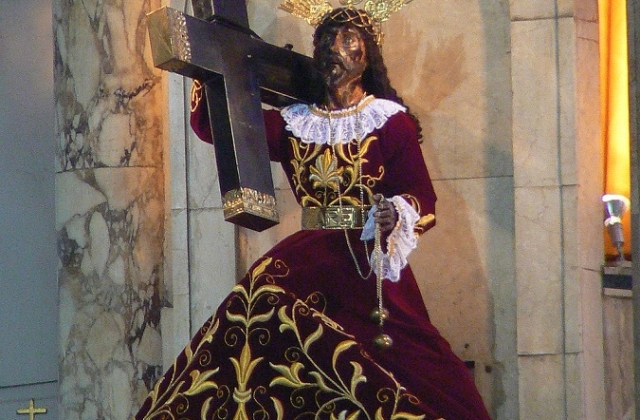 photo by Rotatebot (via Creative Commons)
photo by Rotatebot (via Creative Commons)
Plan Ahead
For those who want to take part in this religious and cultural event, make sure to attend midnight mass the night before and get your camp-out spot as people start gathering in the streets right after church gets out. The midnight mass is an event in itself as well as many gather to hear the midnight homily by the Archbishop of Manila who is currently Cardinal Luis Antonio Tagle.
The journey of the Black Nazarene takes roughly 24-hours and starts at the Quirino Grandstand in Rizal Park and is then pushed in a carriage until it reaches Quiapo Church. After the midnight mass the day before, many families camp out and enjoy the company of others as well as food from the nearby concession stands poised for hungry clientele.
Insider tip: If you want to be a participant of this event and not just an observer, aside from arriving early, make sure to do the walk barefoot to show respect as well as wear the maroon and gold shades that the Black Nazarene himself is cloaked in.
Book now!
Ready to experience these one-of-a-kind festivals? Make sure to book your custom tour with the Philippine travel experts for the best hotels, food recommendations and package deals and you’ll have the time of your life!

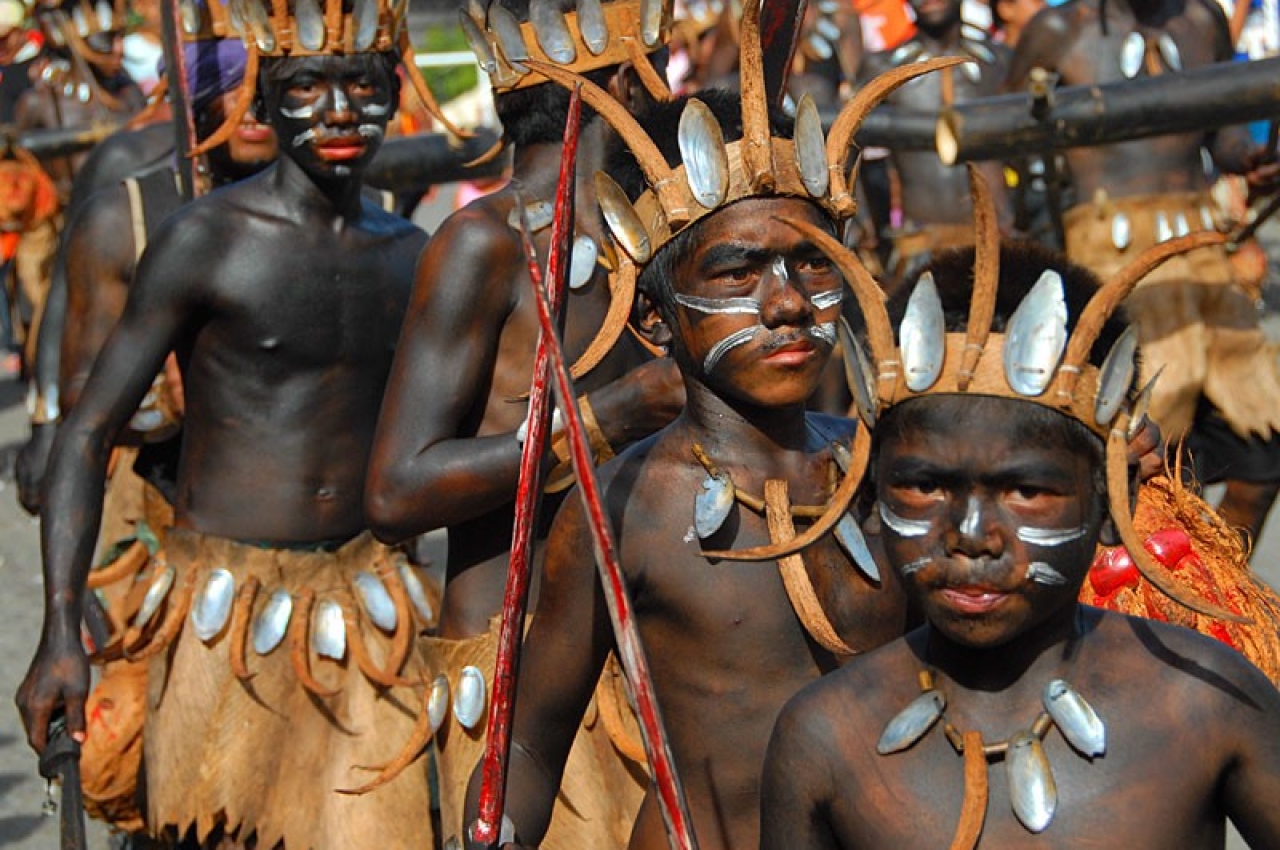 photo by Ken llio (via Flickr)
photo by Ken llio (via Flickr)